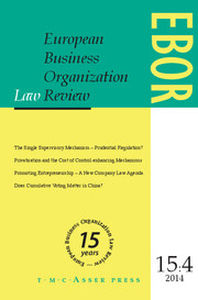Article contents
A Primer on the Uncorporation
Published online by Cambridge University Press: 18 October 2013
Abstract
More and more companies appear with strange abbreviations behind their business name. Consider Chrysler Group LLC (instead of Inc.) or LVMH Montres & Joaillerie France SAS. Some even speak about the ‘endangered corporate form’ and point to the rise of the uncorporation. This primer examines how the uncorporation has evolved in the United States and, more recently, in other economies around the world. We find that the growth in non-listed business forms in Europe, Latin America and Asia has been shaped by a mixture of learning and professional advice arising from the company law review process, as well as by the indirect influence of overseas business forms. We examine the main components of uncorporate business forms that are responsible for limiting transaction costs, curbing opportunism and creating organisational structures that are compatible with entrepreneurial expectations. We show the main differences between the partnership-type and corporatetype uncorporations, particularly the LLC in the United States (US-LLC), the SAS in France and Colombia, and the LLP in the United Kingdom (UK-LLP), Singapore (S-LLP), India (I-LLP) and Japan (Yugen Sekinin Jigyou Kumiai, J-LLP). We find that, given the pitfalls in the evolution of uncorporation laws, an international Model Act would be consistent with lower transaction and information costs and could help to encourage cooperation between firms situated in different jurisdictions.
Keywords
Information
- Type
- Articles
- Information
- European Business Organization Law Review (EBOR) , Volume 14 , Issue 3 , September 2013 , pp. 305 - 342
- Copyright
- Copyright © T.M.C. Asser Press and the Authors 2013
- 1
- Cited by

